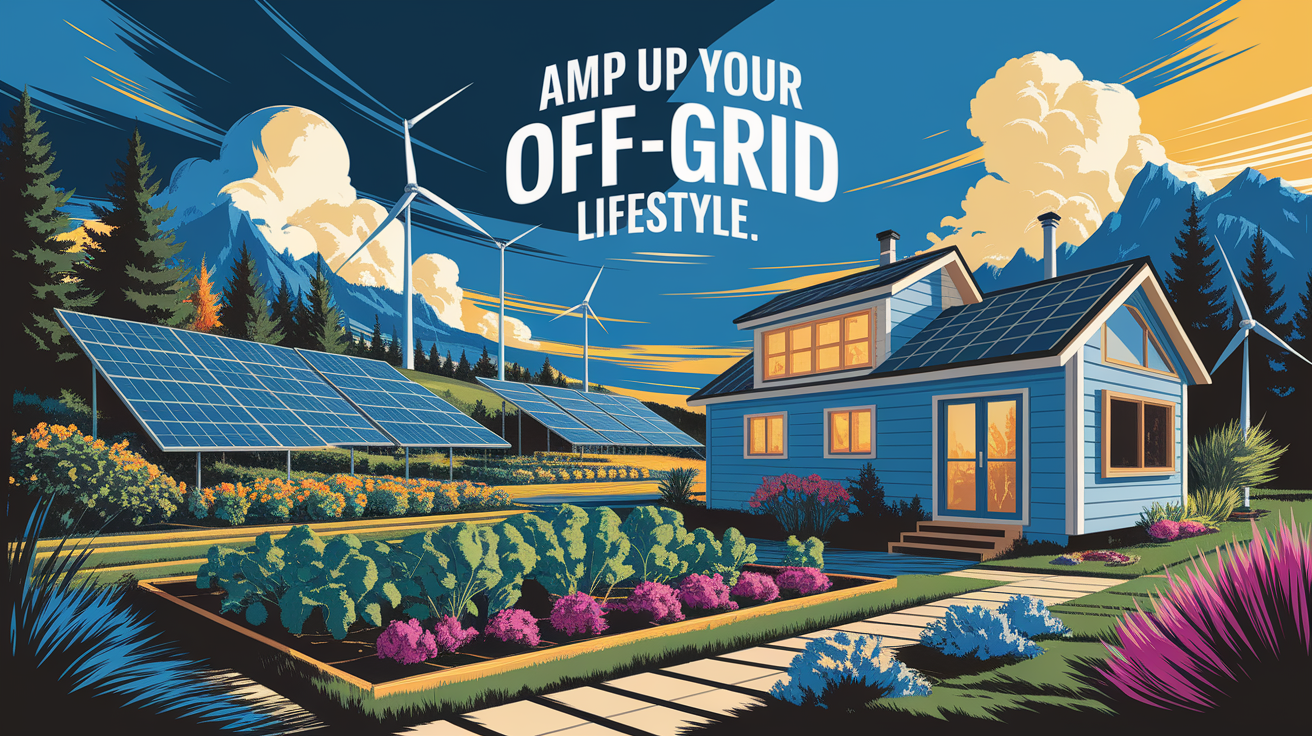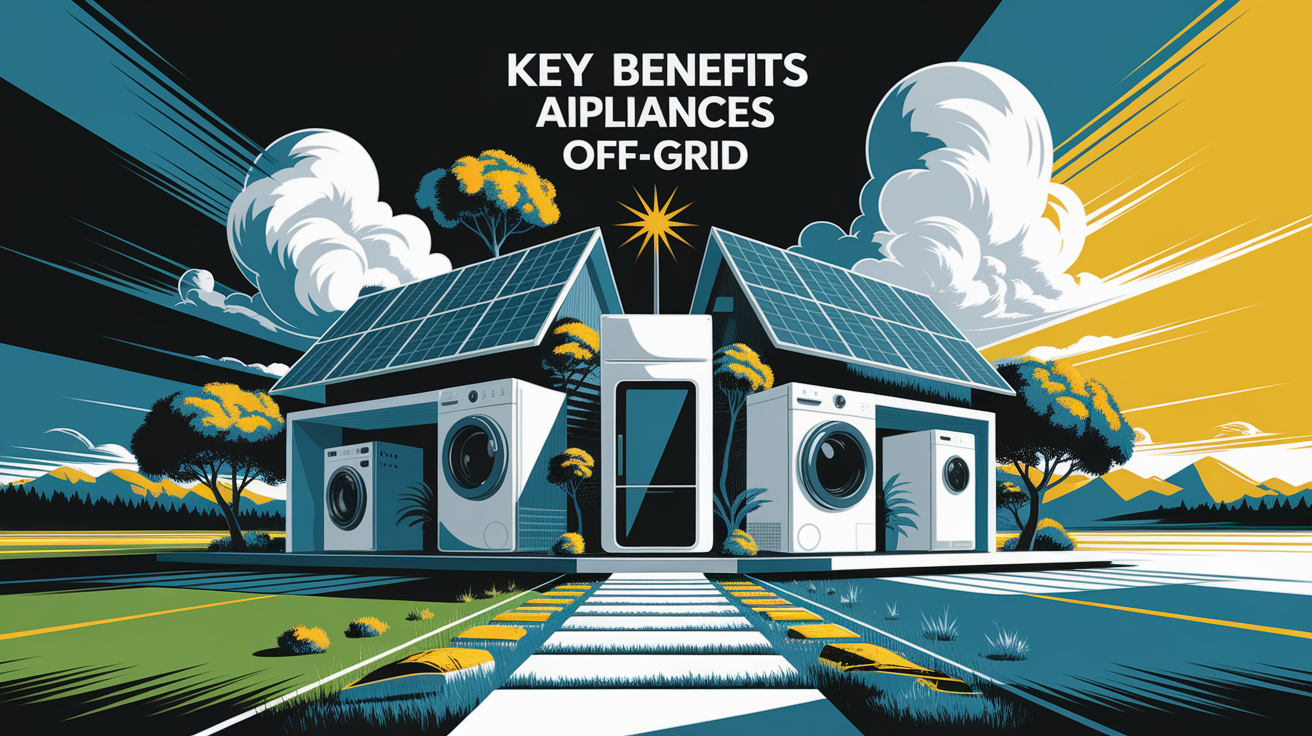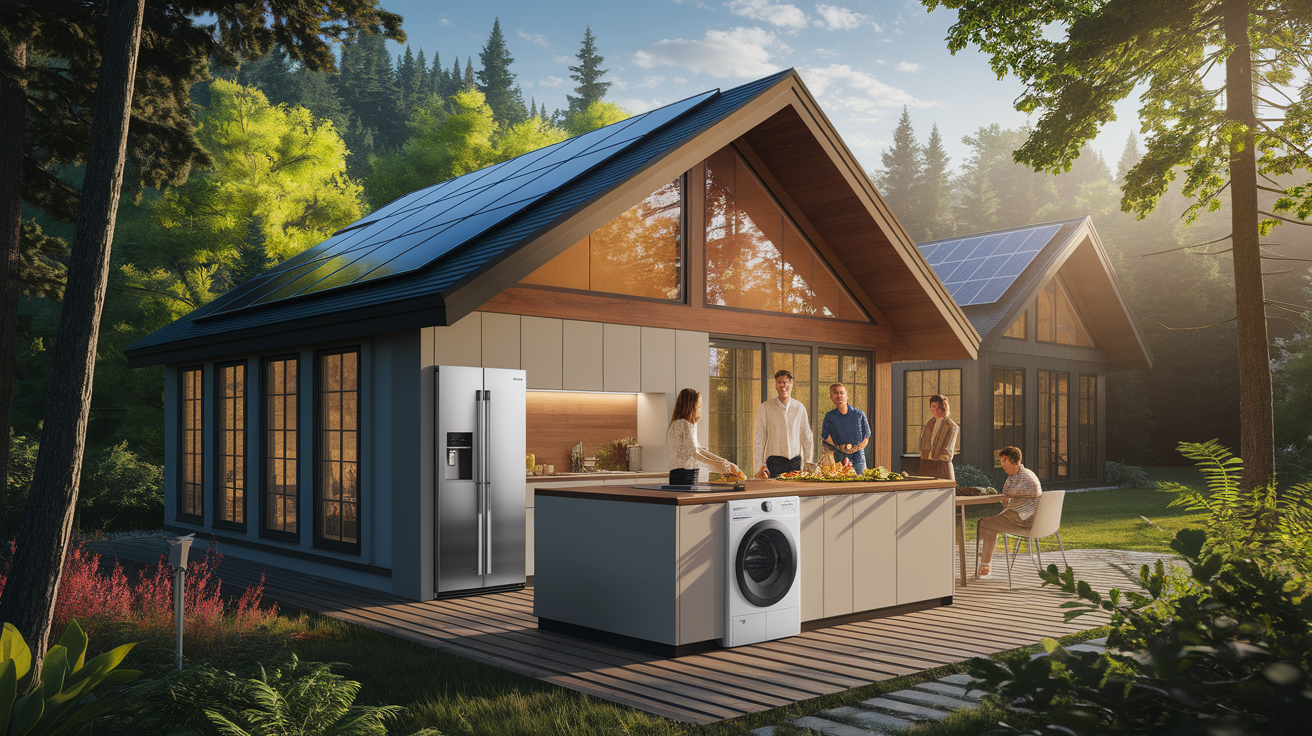Power Up: Your Guide to DC Appliances for Off-Grid Living
Amp Up Your Off-Grid Lifestyle
For those committed to off-grid living, every watt matters. Choosing the right appliances can make the difference between constant power shortages and effortless self-sufficiency. By integrating DC appliances directly into your solar power system, you can streamline your energy use, reduce losses, and extend battery life. The result: more reliable operation, lower maintenance needs, and a more efficient path to sustainable living.

DC technology pairs seamlessly with solar panels and deep cycle batteries, which inherently generate and store direct current (DC). This setup avoids unnecessary conversions to AC power, making it easier to power your appliances directly from your storage system.
Why Choose DC Appliances Off-Grid
The efficiency gains of DC-powered devices are substantial. As Solar Choice explains, avoiding the DC-to-AC conversion via an inverter can eliminate up to 10–15% energy loss. That’s a significant saving in a system where every amp-hour counts.

- Energy Efficiency: Devices such as DC refrigerators and lighting operate directly at your battery’s voltage—commonly 12V or 24V—setting a higher baseline for energy conservation.
- Extended Battery Life: Fewer conversions mean reduced strain on your battery bank, which can prolong the performance of your energy storage system.
- Reliability: Fewer components (like inverters) in the supply chain mean fewer potential points of failure.
However, users must balance these advantages against challenges such as higher upfront costs and the need for specialized wiring. Discussion on Solar Electric Forum underscores the importance of planning for long-term energy independence rather than minimal first-year expenses.
Top DC Appliances for Your Off-Grid Home
The best DC appliances for off-grid living combine low power consumption with durability in remote conditions. Based on insights from The Off Grid Cabin, here are highly regarded picks:

- DC Refrigerators & Freezers: Optimized for minimal power consumption and steady temperature control, crucial for food preservation. See detailed benefits at Warehouse Appliance.
- LED DC Lighting: Offers bright illumination with fractional power draw, making it a staple for energy-efficient setups.
- DC Water Pumps: Ideal for rural electrification, drawing from wells or rainwater tanks without burdening the main AC circuits.
- Ventilation Fans: Essential in warmer climates, available in 12V and 24V versions for integration with solar arrays.
- Charging Ports & USB Hubs: Directly powered from low-voltage DC circuits for small electronics, avoiding inverter use.
Sizing, Sourcing, and Budgeting
Matching your appliance load to your photovoltaic system is critical. Start by calculating each device’s watt-hours per day, then ensure your panels and battery bank can handle peak and average demand.

Key Steps for Sizing
- Determine Appliance Voltages: For small setups, 12V appliances are versatile; for medium to large systems, 24V appliances can reduce current and cable size.
- Assess Electrical Load: Sum the total watts of all equipment for each day, factoring in surge loads for devices like pumps.
- Match Battery Capacity: Ensure your deep cycle batteries store at least 2–3 days’ worth of energy needs for overcast conditions.
Sourcing Tips
- Look to specialized suppliers of low-voltage alternative energy equipment for higher quality and reliability.
- Consider the total cost of ownership—energy savings over time can offset higher initial prices.
Installation and Maintenance Best Practices
Installing DC appliances in an off-grid environment requires precision and safety-minded design. According to Solar Choice, most systems use 12V, 24V, or 48V DC circuits, each with their own cable sizing and protection requirements.
- Dedicated DC Circuits: Install separate panels and breakers distinct from AC wiring to prevent confusion and hazards.
- Voltage Regulation: Use a charge controller to maintain optimal charging levels and protect devices from surges or low-voltage damage.
- Hybrid Systems: Consider maintaining a small AC circuit via inverter for appliances not available in DC versions.
- Professional Installation: Engage electricians experienced in renewable energy and off-grid electricity for complex systems to ensure code compliance and longevity.
Regular inspection of connectors, cable integrity, and ventilation will keep your appliances running efficiently for years.
Empower Your Off-Grid Journey
DC appliances unlock measurable efficiency gains and deliver peace of mind in remote, self-sufficient living environments. Whether you’re powering a tiny home, off-grid cabin, or rural homestead, aligning device selection with your solar energy production and storage capabilities builds resilience and reduces reliance on fossil-fuel generators.
Start small by swapping out your most power-hungry appliances for DC alternatives, track your energy savings, and scale up strategically. Each upgrade is an investment not just in your own independence, but in the broader shift toward green living and renewable energy adoption.







